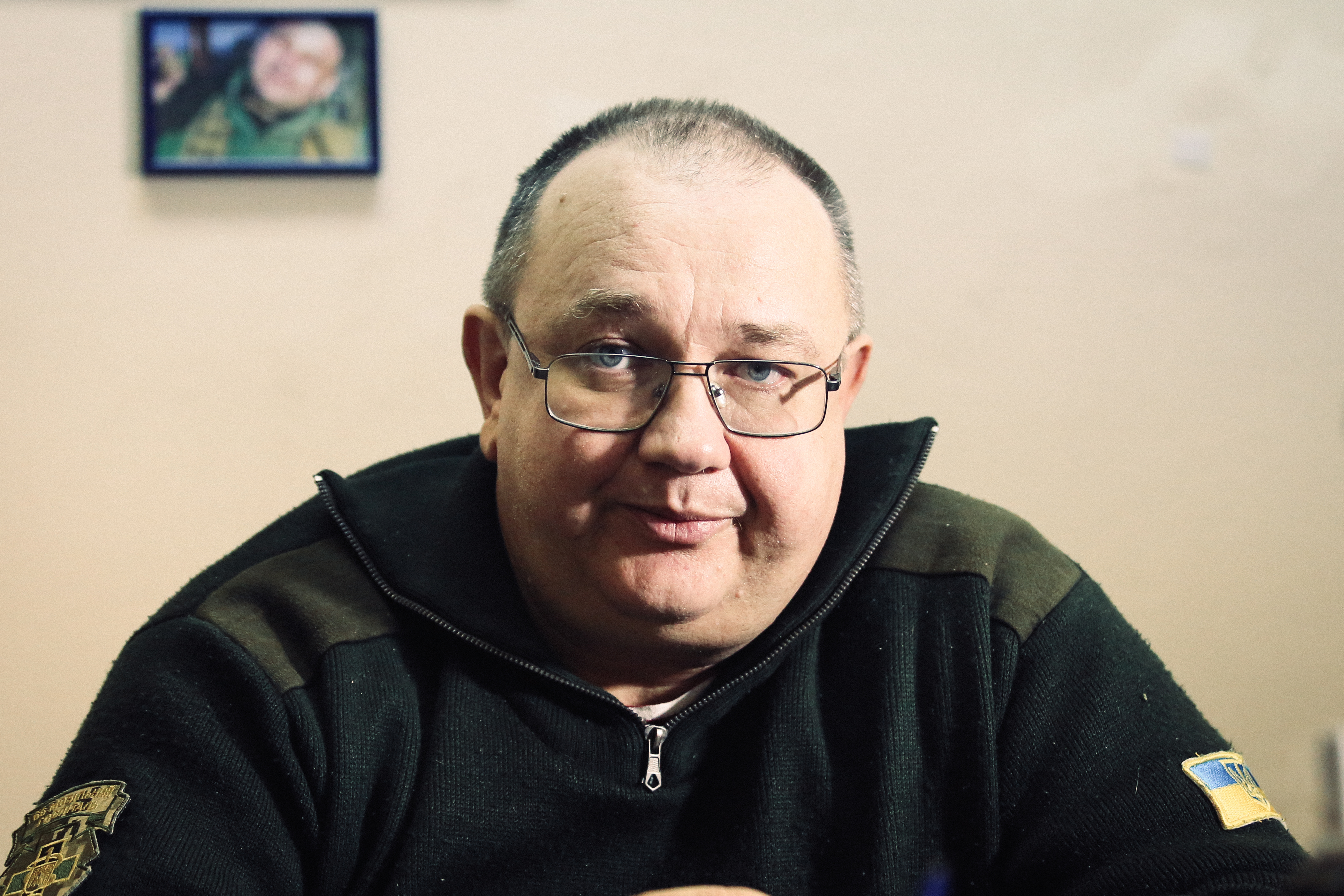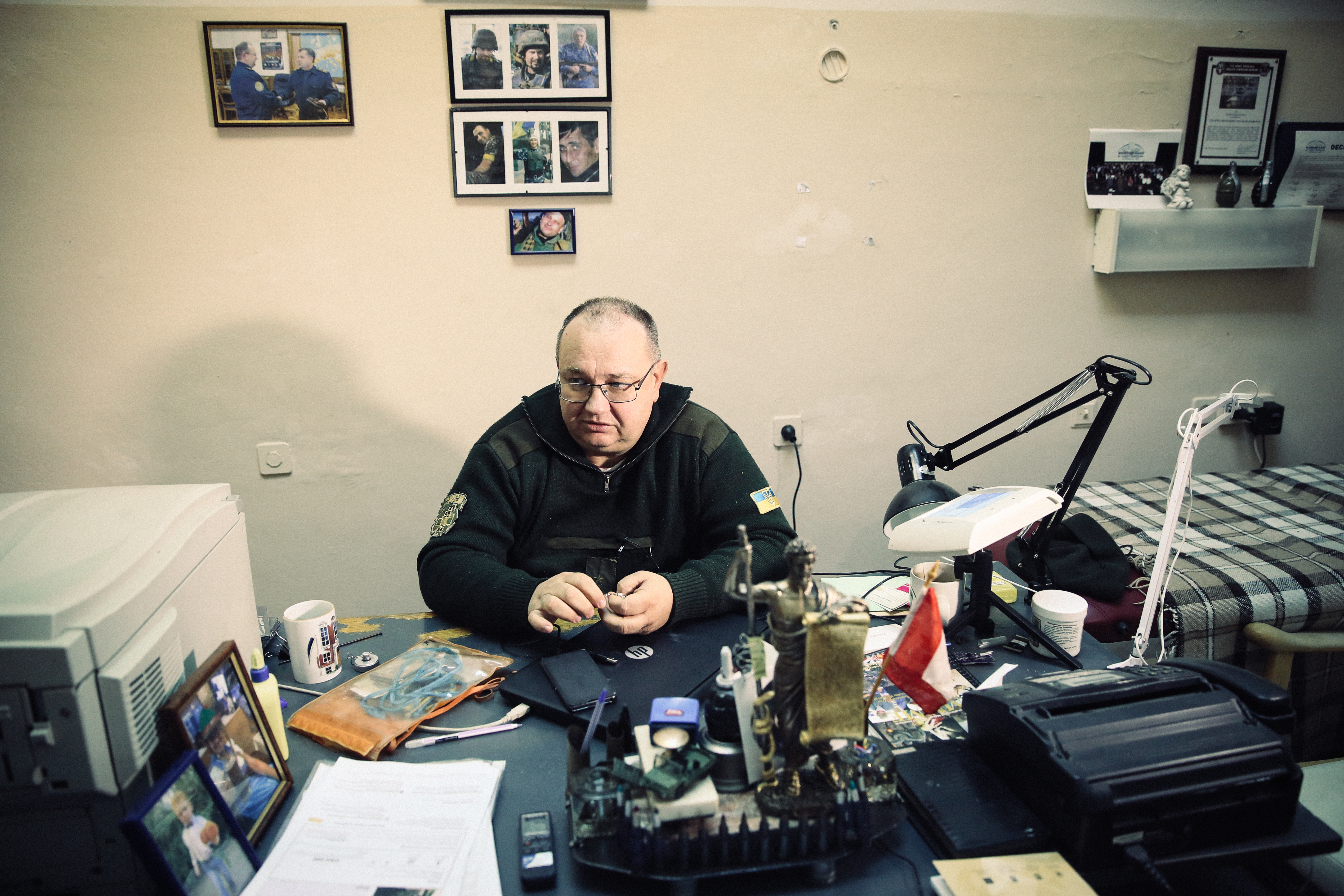Aug. 29: Key events of the day
At dawn, some 1,500 of Ukraine’s army soldiers and volunteer fighters left their positions in Ilovaisk and areas nearby and gathered between the villages of Ahronomichne and Mnohopillia, hoping to leave encirclement in accordance with preliminary agreements with the Russians. As a safety precaution, they divided into two columns, which were to march south by two different routes and meet up once they were through Russian lines.
But the preliminary talks broke down – the Russian officers demanded that the Ukrainian troops had to surrender their arms before leaving the area. Ukraine’s commander on the spot, General Ruslan Khomchak, ordered his soldiers to fight their way out of encirclement. But exhausted and disorganized, many of the Ukrainian troops weren’t aware they were expected to fight, and kept their weapons stowed in cases. Many traveled in unarmored civilian cars and minivans.
The Russians attacked the Ukrainian columns near the villages of Chumaky and Chervonosilske, firing at the civilian vehicles with grenade launchers and machine guns. Hundreds of Ukrainians were killed or were taken captive. Dozens of Russian troops were also killed in fire fights, according to Ukrainians soldiers. The Ukrainian side then retaliated with air strikes and missile attacks. At the end of the day, the military commanders from both sides started negotiations to end the carnage.
Aug. 29, afternoon. Field near the village of Novokaterynivka
Carrying a Red Cross flag in one hand and holding another hand up, Vsevolod Stebliuk stepped out from behind a hillock and started to walk towards a group of Russian soldiers.
Stebliuk, a medic of the Myrotvorets Ukrainian volunteer battalion, was desperate.
He had nine of his comrades hiding behind a hill, most wounded after a Ukrainian military column had been shot up earlier the day. Many more Ukrainians, dead or wounded, were scattered around the field next to the burned vehicles.
The Russian soldiers ordered Stebliuk to stop and show his hands. Lying, he told them that he was a Red Cross humanitarian representative entitled to help the wounded and showed an English language ID from the International Committee Red Cross, which was a certificate he received after completing the organization’s medical training.
But what helped him more was a photo of his grandfather, a Soviet Army soldier who fought in the World War II, that he had with him. A tall Russian officer with reddish hair said his grandfather had also fought in the war. Stebliuk said their grandfathers could have served in the same unit.
“I told him: then what are we doing here now?! I think it touched him. It was a tipping point,” Stebliuk remembers.
The Russian officer, who turned out to be an airborne battalion commander from Kostroma, allowed Stebliuk to take the Ukrainian soldiers to his unit’s camp.
That was lucky for them: as they could have fallen into the hands of fighters who would treat them harshly. Stebliuk had seen another Russian unit, whose soldiers had appeared to be finishing off wounded Ukrainians.
Night in a ravine
With the assistance of two Russian soldiers, Stebliuk searched over the field and found another eight wounded Ukrainians.
In the Russian camp, Stebliuk heard the Russian commander received an order by radio to kill his prisoners. But he refused, claiming it might provoke an international scandal, since he had a Red Cross representative among them.
The commander also stopped his soldiers from mocking the Ukrainian flag. He spent hours with Stebliuk smoking and chatting about the war. He called Stebliuk “Doc” (meaning doctor) and asked Stebliuk to call him Sergey.
VIDEO OF STEBLIUK:
Sergey claimed they had been waiting for the Ukrainian troops for three days. His unit had also had soldiers killed and wounded after a clash with a Ukrainian military column.
They spent the night in a ravine, suffering from the cold and a lack of water. To aid the wounded, Stebliuk gave them pieces of bandage wetted with his saliva and brandy to suck. Nevertheless, two of the most seriously wounded died overnight. Another died next day.
Picking up wounded
In the next morning, just after dawn, the Russians allowed Stebliuk to drive to the nearby villages of Novokaterynivka and Pobeda for water. He drove a small but reliable LuAZ 967M military cabriolet, which had allowed him to get alive out of the carnage on the day before. Stebliuk flew a big white flag on his car and took empty plastic bottles with him.
But he returned loaded with wounded Ukrainian soldiers instead.
“Just after I arrived in the village, the villagers started telling me they had our wounded guys in their homes,” he says.
So Stebliuk would take turns travelling for the wounded and then for water. He managed to collect nearly 80 people. One of them, Igor Drychan, a soldier of Svitiaz volunteer battalion, became his assistant.
Stebliuk said they met several Russian patrols looking for Ukrainian soldiers, and told them they represented the Ukrainian Red Cross and were delivering water to Russian paratroopers.
At the end of the day, the Russian commander Sergey told Stebliuk to prepare for evacuation. A column with Ukrainian ambulances for the wounded and trucks for the dead was heading in their direction as a result of a recent agreement. The two men exchanged sad smiles for the last time.
Fight in railway depo
Before the war, Stebliuk taught forensic psychiatry at the police academy in Kyiv. He was a volunteer medic during the EuroMaidan protests, and later volunteered for the war, joining the Myrotvorets battalion of police officers who supported the EuroMaidan.
On Aug. 24, 2014, some 80 soldiers from Myrotvorets arrived in Ilovaisk in civilian minivans with the task of helping clear the city of separatist troops. They had planned to return in the evening, but instead spent the next five days at a local railway depo, hiding from the constant shelling in a hole under a locomotive.
They were based next to the railroad, which separated the city into the parts controlled by government troops and Russian-led forces. Short of food and ammunition, they had waited for reinforcements, which never came.
Ten of the soldiers of the Myrotvorets unit were wounded during the days they spent in Ilovaisk. On Aug. 29, they tried to break out of their encirclement through the “green corridor” and lost ten of those people in a shootout near Novokaterynivka.
Stebliuk is now in charge of the psychological rehabilitation unit at the war veterans military hospital in Kyiv. Seven portraits of his perished war comrades hang behind his desk at work.
“Before Ilovaisk, I didn’t realize that people really do die in wars,” he says.
Myrotvorets volunteer battalion was formed in Kyiv region in May 2014 predominantly from police officers, retired policemen and veterans of peacekeeping missions to defend Kyiv Oblast and also Donbas area from separatists and Russian threat. In early summer its fighters were sent to Donbas as a unit of interior ministry to police the local cities after they were liberated from separatists by Ukraine’s armed forces. In Ilovaisk, the battalion lost 11 of its soldiers killed and some 40 captive out of some 80 fighters that participated in operation. Andriy Teteruk, battalion’s head, was elected as lawmaker in October 2014.





